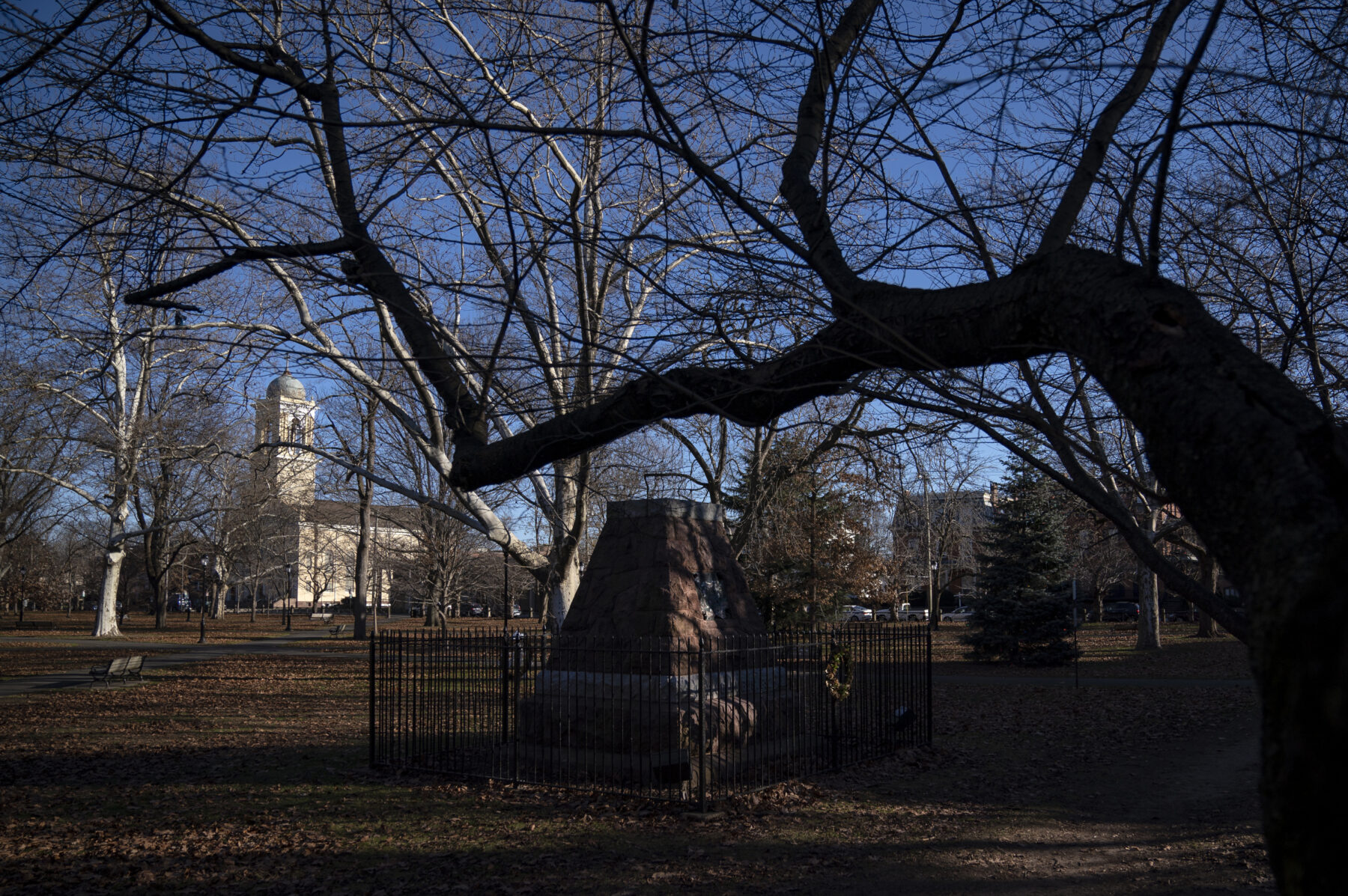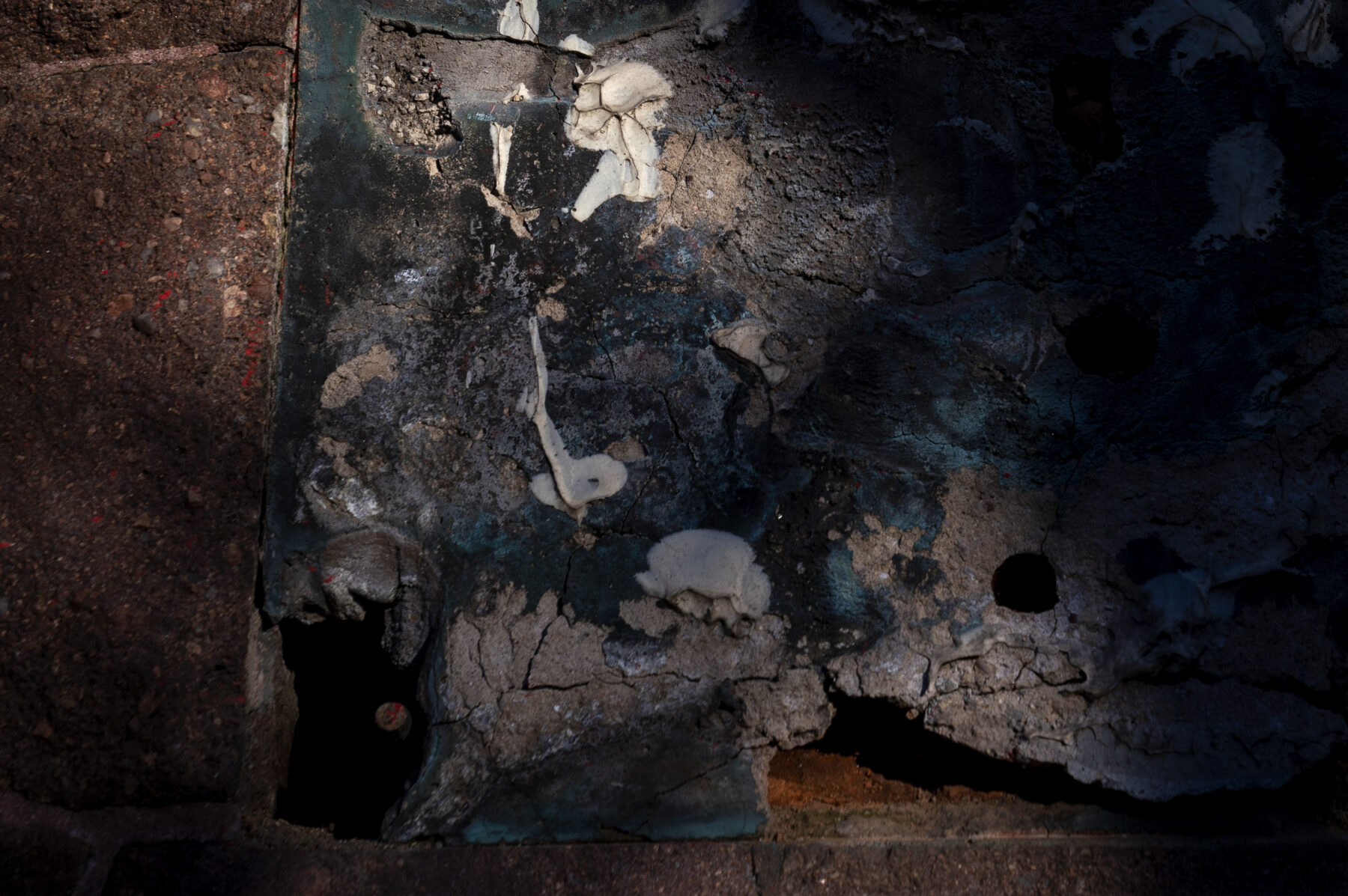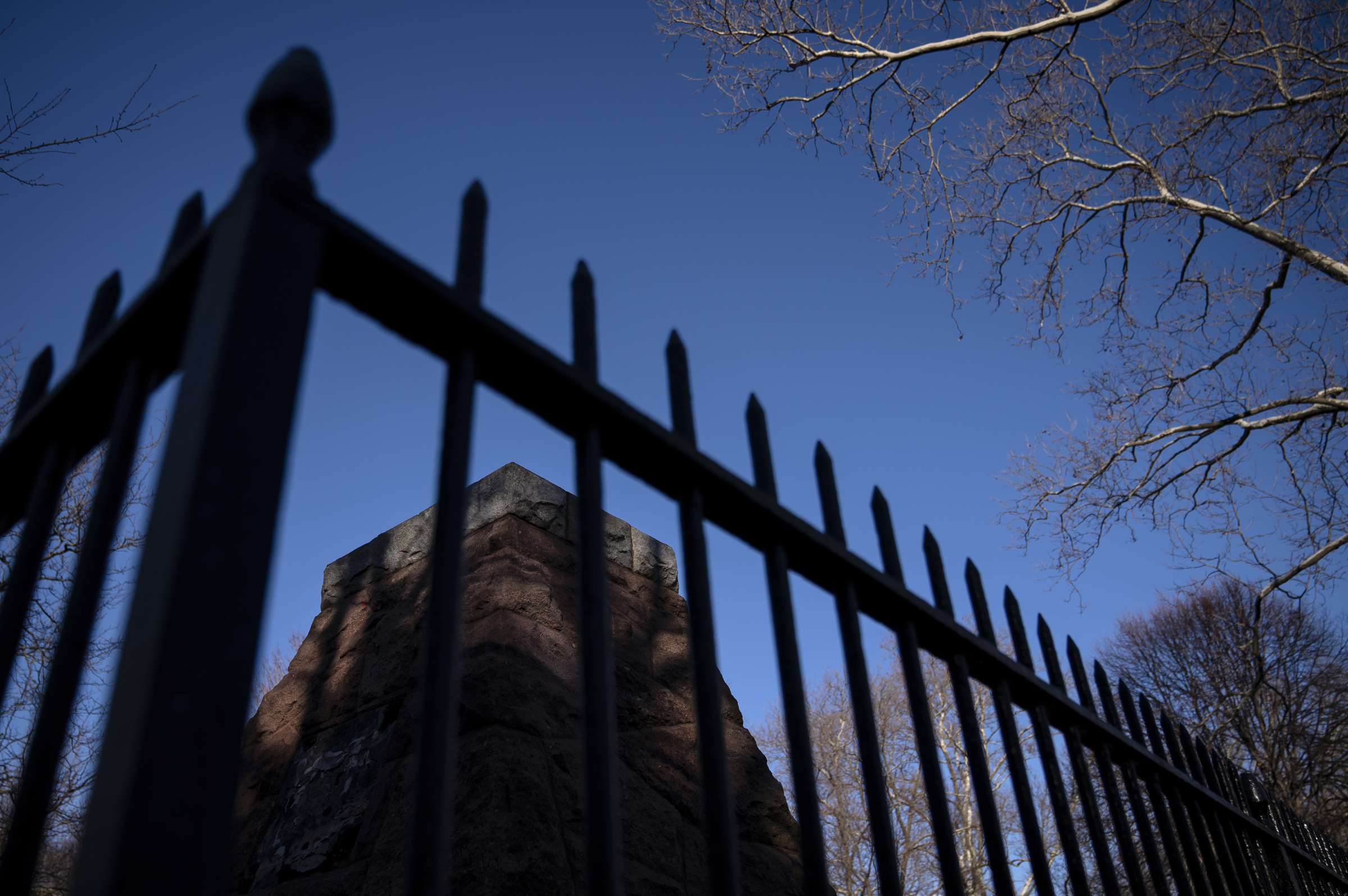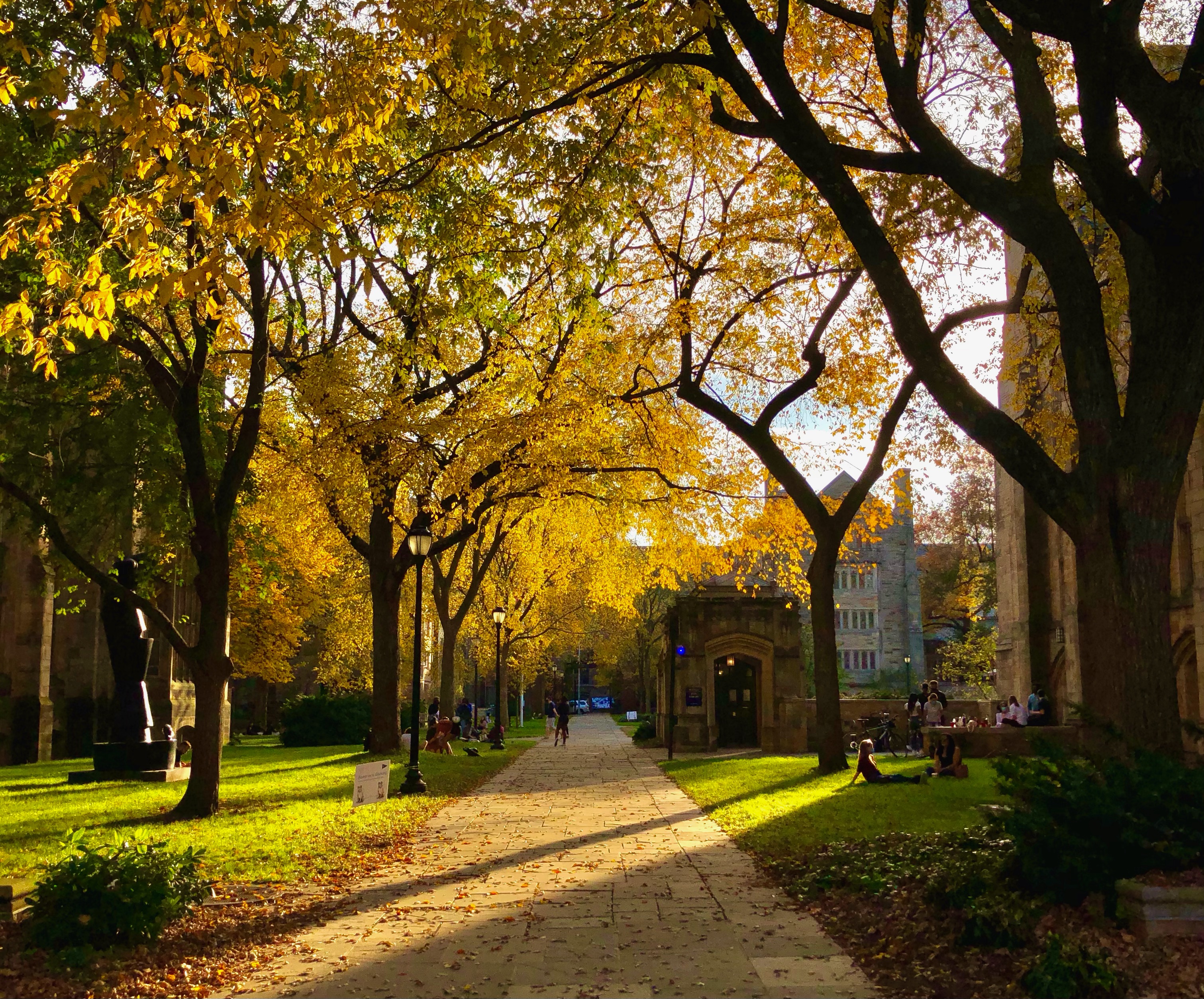If I was ever uncertain of whether other white grandmas dressed like mine, the breakfast meeting of the Italian American Women of Greater New Haven (IAWGNH) made the answer obvious. Her uniform was everywhere, without an infraction in sight: tan leather velcro-strap shoes or white sneakers, white shirts underneath buttoned cardigans or fleecy vests, the occasional whiff of Chanel noº5 in between overwhelming waves of Chanel noº5, pearls and bulbous necklaces, little swooshing curls in hair just a few inches long, and so many scarves. Was this what my grandma’s mysterious bridge club looked like, all those years of my childhood?
“This is my pleasant leisure time activity,” said Frances Calzetta, the President of the IAWGNH. With a little smile, she gestured past a jumble of Thanksgiving and Christmas decorations, to the group’s members seated around square tables in a corner of the Twin Pines diner in East Haven.
Despite the festive ambience, Calzetta asserted that this was a “business meeting.” Or, she corrected herself, it usually doubled as a breakfast and a business meeting. Typically, they’d discuss business first (fundraisers, candidates for their scholarship, other miscellaneous items) and then chow down. But this time, it was a mess: the restaurant had booked two funerals—most likely either Greeks or Italians, she said—in the back room of the diner where Calzetta and her colleagues had planned to conduct their business. With agenda items thwarted, their breakfast was reduced to, well, just breakfast.
It turns out the IAWGNH is nothing like a bridge club. Their “pleasant leisure time activity” is not cards—it’s a lawsuit against the city of New Haven. The group filed their suit in October, in response to the removal of the Columbus statue from Wooster Square Park in July of 2020. The removal resulted from protests against the statue during the movement for racial justice in June 2020 ignited by the death of George Floyd; over the course of the year, nearly a hundred other statues were removed across the country.
If Calzetta and her colleagues are fighting on the side of white backlash in the war over American history, their battle may seem obscure: a small group of mostly elderly Italian American Women of Greater New Haven, with funds raised from a fashion show (partially collected in what appeared to be a Barnes and Noble paper bag), via discussions at eggs-and-bacon breakfasts at a local diner, have taken it upon themselves to compel the city to put back a statue in a tiny park in New Haven.
Columbus, of course, is not obscure; he has been aggrandized to the point of ubiquity. And the group’s actions aren’t surprising: they fit a national pattern of Italian Americans going to impassioned lengths to preserve Columbus’s monumental presence in America. Most statues taken down across the country in the last few years have stayed down, but local campaigns to restore them, in some cases, have been successful, or at least noisy. In Pittsburgh, an Italian American group has been in the process of suing the city since October of 2020, in response to their Columbus statue’s removal. In South Philly, a judge—who appeared on a podcast with QAnon organizers earlier this year, and was listed as speaker at a QAnon event she says she didn’t attend—reversed a decision made by city officials to remove their Columbus statue. City officials in Bridgeport voted to return their Columbus Statue months after voting to remove it, though the decision was reversed again a few hours before the statue was to be returned.
Monuments are limited artifacts—and, ironically, Calzetta and IAWGNH’s lawsuit gestures towards this fact. Statues depicting historical figures feed the reductionist mode of historical thinking that has driven unwavering support for ‘heroes’ who are often anything but. In many cases, monuments arise from—and perpetuate, even—the same kind of American myth-making that views the acknowledgement of structural oppresion’s role in this country’s history as an existential threat; it’s the very approach of those who deem critical race theory to be an erasure of “Western history” and who agitate over the 1619 Project’s reframing of history in terms of slavery and racial oppression. America’s and New Haven’s recent confrontation over monuments is more than a matter of political tip-toeing to appease proponents of old monuments and devise new monuments to fill space once held for racist symbols; it is also a fundamental reflection of the finite capacity of monuments to serve as meaningful vessels for public memory at all. Representation matters in the public imagination—and new monuments that prioritize marginalized voices can offer a valuable solution, especially in a country where monuments remain ever-present in public spaces. But the failures of the Elm City’s approach to replacing their Columbus statue also show that reframing history, improving representation, and creating dialogue between two partisan camps might be best achieved through other means. Perhaps we need to rethink monuments themselves.
⭑ ⭑ ⭑
On June 24, 2020, a large crane appeared in Wooster Square Park. Mayor Justin Elicker, citing “many leaders in the Italian Community” who helped the city arrive at the decision, had unexpectedly ordered the statue’s removal just two days earlier, after the city Parks Commission voted to remove it. In the company of supporters and protesters, Columbus was transplanted to an orange platform on a truck, tethered with thick straps, and driven off. The statue’s base remained, protected by an iron black fence and a moat of tulips.
On the day of the statue’s removal, the Italian American Heritage Group—a local organization made up of about 10,000 Italian Americans from New Haven and the surrounding area—filed a lawsuit against the city over Columbus’s removal. A year later, on the one-year anniversary of the statue’s removal, a handful of the group’s members and other Italian Americans gathered at the statue’s vacant base and hung up a sign that read, “ALL LIVES MATTER,” signed off: “From your Italian American Friends.” By then, the Italian American Heritage group’s request to nullify the vote to remove the statue had been dismissed.
The IAWGNH decided to take up the fight; they filed their own lawsuit in October 2021. According to Calzetta, it rests on three claims: first, that “the mayor chose one ethnic group over another”; second, “a denial of due process” in the decision-making to remove the statue, which, they claimed, had violated Civil Rights protections, as well as First and Fourteenth Amendment rights; and third, “an inability to enjoy the park” where the statue once stood. Their lawyer, Patricia Cofrancesco, who represented the Italian American Heritage Group before them, is presenting their case pro-bono. The rest of the legal expenses are being funded by local IAWGNH fundraising events, including an annual fashion show.
Calzetta and her colleagues are optimistic they will win, because they feel they have support from community members. Elicker has been publicly dismissive of the campaign. “This suit is without cause or merit,” he wrote in an October statement, “We will vigorously defend this case. The plaintiff, in bringing it, is draining city resources away from more pressing issues before the city.”
⭑ ⭑ ⭑
Calzetta considers herself a politician. She flaunts her campaigning for the preservation of the memory of Columbus at the New Haven Historical Society, where she is a member, and her “antipornography work,” which includes fighting for the closure of a strip club she feared would increase crime rates according to the New Haven Register, which described her as an “outraged neighbor.” She was also named to the Wooster Square Monument Committee, tasked with selecting an idea for a replacement statue that represents Italian Americans; in August, the committee selected a replacement, and it has yet to be officially approved before the eighteen months of fabrication and installation of the new statue can begin.
During our interview, Calzetta freely reprimanded New Haven politicians for their roles in removing the statue. She called Congresswoman Rosa DeLauro, a Wooster Square-born Italian-American who strongly opposed the statue, “an unfortunate congresswoman who turned her back on everything she believed in for political reasons,” and chided Mayor Justin Elicker as a “very weak man,” “terrible terrible,” and, at the end of a string of more pejoratives, “a mayor who did not care about Columbus.”
Calzetta cares about Columbus. She cares about Columbus to the point that New Haven-born and raised Italian American Historian Anthony Riccio calls her the “voice” of all Italians who oppose the removal of the Columbus statue. Columbus “was a tough governor,” Calzetta euphemizes, “but he did magnificent kinds of things: improve the lives of the Indians, the country became open for trading around the world, improving the lives of even the people who came to settle here.” When asked about how she weighs this supposed magnificence with Columbus’ responsibility for the genocide of Indigenous peoples, Calzetta says, “don’t give me all this about how great and wonderful they [Indigenous peoples] are,” and adds that “they are hell bent on trying to destroy Columbus. And by destroying all this, they are discriminating against the Italian American people.”
⭑ ⭑ ⭑

Beginning in the late nineteenth century, as scores of Italian immigrants settled in the Northeast of the United States, Columbus’s legacy was settling, too. In 1892, President Benjamin Harrison proclaimed Columbus Day as a one-time national celebration. But Italian Americans took the holiday and ran with it, organizing celebrations across the country in the following years with the help of sponsorship and state lobbying from the Knights of Columbus; soon enough, Columbus Day was a federal holiday. Simultaneously, Columbus monuments cropped up nationally: often funded by private donations from Italians, these monuments were a point of pride, ceremony, and a new, hybrid Italian American nationalism.
New Haven’s statue was unveiled in Wooster Square on October 12, 1892—the day after the first national celebration of Columbus Day. According to the New Haven Register’s archives, at the statue’s unveiling ceremony, an Italian-American speaker declared: “May this statue serve to eliminate whatever distinction there may be between Italians and Americans, and may it keep peace and prosperity for all future time.”
In New Haven and nationally, these Columbus-centered fixtures helped reinforce convenient myths: that Columbus was Italian (he wasn’t; he was born in the independent republic of Genoa four centuries before Italy was unified), that he “discovered” America (he never set foot in North America), that he was the “first immigrant” to the United States (the United States, of course, hadn’t yet been formed, and Columbus’s expedition was commercial, military, and resulted in the genocide of millions of Indigenous people).
But these myths had motive far greater than pride: Columbus was “central to the process through which [Italian-Americans] were fully ratified as white during the 20th century,” as author and editorial writer Brent Staples writes in his October 12, 2019 New York Times op-ed entitled “How Italians Became White.” In Italy, Southern Italians had faced discrimination from whiter Northern Italians, and immigration offered no escape. Abuse in America often took the form of slurs, exclusion from schools and labor unions, and consignment to segregated church pews. In the South, Italians were also subject to some of the mob violence routinely terrorizing Black Americans: in 1891, eleven Italian Americans were lynched in New Orleans—President Harrison’s 1892 Columbus Day proclamation was a direct response. Facing racialized violence, Italians had a choice between aligning with whiteness or with people of color, a choice they and other European immigrants were privy to because their new American identities were still undefined. They chose whiteness, and with it the racist violence of white supremacy essential to proving themselves as white. As the legal scholar and author of Uncle Tom: Why Blacks Must Police Racial Loyalty Brando Simeo Starkey writes: “[European immigrants] watched whites abuse blacks, mimicked whatever they saw and whiteness—the carrot they had long reached for—slowly came closer to their grasp.”
Columbus’s role was thus two-fold: he was an instrument for grabbing the carrot and a symbol for maintaining a grip on it. Professor Thomas Allen Harris, a Senior Lecturer in African American Studies and Film and Media Studies at Yale, spoke to me about the artifice embedded in the Columbus hero narrative. “Who decided that Columbus was [a hero] and how did that happen? That was a creation of manufacture,” said Harris. The Columbus hero narrative, Harris told me, was a way for Italian-Americans to ennoble themselves—which all communities seek to do in one way or another. But the myth of Columbus didn’t just ennoble Italian Americans or make them more acceptable to the white majority. It made them white.
⭑ ⭑ ⭑
Calzetta was born and raised in Wooster Square, but now she lives in Branford. Riccio, who has interviewed hundreds of former residents of Wooster Square, describes the area in his book The Italian American Experience in New Haven as a space where tradition lives on, where “one can still catch glimpses of the old neighborhood and imagine it in its heyday.” When I interviewed Calzetta at the Twin Pines Diner, I expected her to wax sentimental about Columbus’s role in Wooster Square’s Italian American tradition. But little sentimentality was detectable. She didn’t express passion for the neighborhood as an Italian American hub. Despite “enjoyment of the park” being the basis for the third claim of her lawsuit, Calzetta seems indifferent about the neighborhood.
“It means nothing to me. As far as I’m concerned, Wooster Square contemporary, they cleaned up a major slum,” said Calzetta, referencing an urban renewal project that rehabilitated the industrial area and uprooted Italian-Americans from Wooster Square. Addressing the square in the second person, she said, “No, you’re not the center. You’re not better than anybody else.” According to Calzetta, Wooster Square is important mainly because it displays Italian-American culture to others. “[The statue’s] been there one hundred twenty years, and Chapel Street’s a main street. So you drive by, the statue’s there,” she said. Calzetta is not personally invested in Wooster Square nor its park—and perhaps her investment in Columbus isn’t personal, either.
Thanks in part to the Columbus myth, Italian Americans have been securely ratified as white for over half a century. Claims that Italian Americans face racism and discrimination in the twenty-first century, then, seem hopelessly out of date. But if their whiteness is no longer in danger, why do so many Italian Americans feel threatened by the reevaluation of Columbus’s legacy and the removal of his monuments? Perhaps Calzetta’s impersonal, unsentimental investment in Columbus provides a clue. “You drive by, the statue’s there.” Calzetta is more interested in imposing the symbolism of Columbus on others than in preserving Columbus as a symbol of Italian American heritage. Columbus no longer needs to symbolize inclusion; Italian Americans have firmly achieved it. Instead, he now seems to embody only the ugliness of his historical legacy—the preservation of a white supremacist status quo and a tradition of racialized violence.
⭑ ⭑ ⭑
The day the Columbus statue was removed from Wooster Square Park, Norm Clement visited the park. A Confederate Quinnipiac Native and a member of the Penobscot tribe, Clement also serves as a community organizer, activist, and elder on the land now referred to as New Haven—though New Haven, including Wooster Square, is the unceded territory of the Quinnipiac people. Clement had been protesting for the removal of the statue for a decade, so he showed up when he heard the statue was to be removed that day. There, in the middle of the first wave of COVID-19, he said an Italian-American counter-protester spat in Clement’s face.
Clement describes his fight against the Columbus statue as a no-brainer: “The Columbus statue is representative of the beginning of colonialism—why wouldn’t we fight against that?…If you want to honor Italian Americans, then choose somebody else, somebody who represents you. Not a mass murderer and rapist.” And New Haven’s statue carries added symbolism because the Knights of Columbus’s homebase is in New Haven—“that’s the organization that fought for and put up these statues across the country,” said Clement, and it’s also where the statue will soon reside.
Even though Clement and other advocates have fought against celebrations of Columbus for years, Elicker acknowledged only the recent initiative of “many leaders in the Italian Community” when the statue was removed. But this is unsurprising: at a recent Board of Alders meeting, Clement told me, only Italian-Americans were invited to express their perspective on Columbus’ legacy in New Haven.
“The way the city has looked at it, the Italian Americans are a big voting bloc,” said Clement. “There’s only a few of us Indigenous people here. And why is that? Because of Columbus.”

On the subject of the IAWGNH and the city officials in Bridgeport who voted to put back their statue, Clement said, “White supremacists are going kicking and screaming into the night. They don’t want to give up any power. They’re not going to give up any power without a fight, and then they’ll manipulate and do whatever they can to regain that power.”
Columbus’s statue has generated more than a fight: it’s become a distraction. For James Rawlings, the former President of the NAACP branch of New Haven, Chairman of the Connecticut Native American Intertribal Council, and tribal elder of the Wampanoag tribe, the persistence of debate over these monuments detracts from more present, consequential social, economic, and health inequities, especially during the COVID-19 pandemic. He points to Secretary of the Interior Deb Haaland, the first Native American to serve in the Cabinet, whom he says is creating long-overdue change, especially in returning stolen land to Indigenous peoples.
When the statue was removed from Wooster Square, Clement gathered Indigenous people from the area and reblessed the ground where the Columbus statue had stood. He doesn’t want to have to do it again, nor does he want to have to fight for the statue’s removal once more. But, he said, he would.
“It is tiring,” said Clement, followed by a long pause. “This government has been trying to erase us for 500 years. They haven’t done it yet, and they’re never gonna do it. Our communities are under attack all the time…We still have to go through that every day. It’s sad. When is it going to end?”
⭑ ⭑ ⭑
“Indicando la via al futuro,” or “Pointing the Way to the Future,” is the title of the monument that was chosen among artist submissions for a statue to replace Columbus. Created by Marc-Anthony Massaro, it depicts an Italian family, with a man at its helm and his son pointing to the horizon—while two women of the family watch. It was chosen by the Wooster Square Monument Committee, which included Calzetta. Elicker assembled the group following the removal of Columbus to seek out a statue that would better represent the Italian American experience.
Calzetta hates it. “It’s disgusting,” she said. “That is not the Italian American immigrant. … It shows their lack of knowledge of the Italian culture, of the Italian immigrant experience, no knowledge of art.”
Calzetta says the statue depicts the two women as “very weak,” which she finds not only demeaning but also historically inaccurate. The Columbus statue was not explicitly about women, according to Calzetta, so she found it more representative (though, unsurprisingly, Columbus was not kind to women—for one, he regularly “gifted” Taíno women to his crewmen to be beaten and raped).
Other Italian Americans are dissatisfied with the statue. Vincent Mauro Jr. is the chairman of the Democratic Party in New Haven, a former alder of Ward 8, which includes Wooster Square, and a 48-year-old second-generation Italian American. If he had it his way, Mauro wouldn’t pick Columbus to represent Italian-Americans—instead, he’d pick the kitchen table as a symbol for family and exchanging ideas and culture.
Clement wishes he had been included in the discussions.“I would have liked if Indigenous people were invited to the table to decide what was going to go there,” he said. “[Mayor Elicker] decided that he was going to leave it up to the Italian American community.”
Rawlings proposes a more prominent location for a monument that honors Indigenous histories—perhaps near City Hall.
To put it bluntly, New Haven’s solution disappoints many people: the new monument’s symbolism is too much, not enough, and completely wrong, all at once. Perhaps the form of the monument itself is underestimated, or overlooked, as a limiting factor in this debate over public memory. Perhaps if we can think beyond the monument, we can reach a real solution.
In addition to teaching, Professor Thomas Allen Harris makes films. His work explores the historical narratives within families in relation to larger cultural shifts. One of his projects—first founded through the Digital Diaspora Family Reunion, LLC, and then turned into the PBS series Family Pictures USA—focuses on inherited and collated family photo albums, and the relationship between personal family narratives and collective ones. Harris tours the country, summoning families from diverse backgrounds to slip on gloves and dive into photo archives of their ancestry. After interviewing about one hundred families, Harris combined the narratives into an exhibit he calls a “shared family album.” His work proposes a new mode of documentation, historical thinking, and public memory.
“The family album is in some ways a kind of monument,” said Harris. “It’s not really a monument, but it has in it this solution to understanding the complexity, the fullness and the diversity of who we are and who we’ve been. For me, it’s really about moving the family album into the public space in a way that approximates or tries to engage in the space that monuments would typically occupy.”
Harris’s interviews, especially those with families who have connections to the Confederacy, often confront topics similar to those broached when discussing colonial monuments.
“I have people who come to me with pictures of Confederate family members and history in their albums,” said Harris. “I create a space where they can come and share those […] They don’t have to have shame around that. That’s part of the history. They could look at it squarely, and we can have honest conversations around the ambivalence people might have.”
Monuments are predisposed to promoting a genre of historical thinking that parallels IAWGNH’s approach to Columbus: a singular, mythologized narrative that obscures history. To change this pattern, federal guidance might be necessary—instead of leaving it all up to city government to make (or reverse) monument decisions, which tend to prioritize wealthy and white groups’ concerns. But the monument problem will not be solved by just changing the figures and ideas that monuments represent, nor by adding plaques that gesture at historical, political, and social context. It’s about moving on from monuments altogether, toward other vessels that engage in other ways with their public, the present, and the truth.
On June 24, 2020, once the Columbus statue was lifted from its granite base in Wooster Square, it was moved to the road and onto the open platform of a truck. It was an unfamiliar sight: Columbus, embarrassingly, was smothered by ropes. Then the truck started to move, and all of the sudden, the monument was replaced by momentum; the symbolism transformed, at least momentarily, into performance art. Here was nuanced symbolism, embedded in its form an obvious context about both the statue’s present and past, and the product of a public re-engaging with history. If a public representation of Columbus were to ever seem appropriate, then perhaps this was it—for it was de-centered, defamed, and, most of all, fleeting. People cheered along the sides of the road when the statue came to them, and when it rolled away, they looked away.
Nicole Dirks is a sophomore in Branford College and an Associate Editor of The New Journal.



